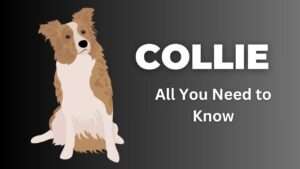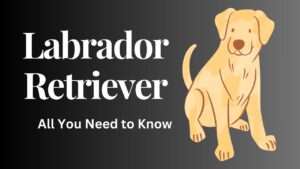Dive into the fascinating world of the American Leopard Hound with our comprehensive guide!
From its rich history to its unique traits, discover all you need to know about this captivating breed in just a few scrolls.
Contents Overview
Breed Overview
The American Leopard Hound, also known as the Leopard Cur or Catahoula Leopard Dog, is a versatile and energetic breed known for its striking coat patterns and exceptional hunting abilities.
Here’s a quick overview of the breed’s characteristics:
- Size: American Leopard Hounds are medium to large-sized dogs, with males typically weighing between 50-90 pounds and females ranging from 40-65 pounds.
- Coat: Their coat comes in a variety of colors and striking leopard-like patterns, including merle, brindle, solid, and patched.
- Lifespan: On average, American Leopard Hounds live between 10-14 years with proper care and nutrition.
History and Origins
- European settlers brought various hound breeds to North America, where they interbred with indigenous dogs and regional varieties, giving rise to a distinct type of hound in the southern United States.
- Adapted to the diverse terrain and hunting needs of the region, these dogs became integral to the hunting traditions of the southern United States, prized for their endurance, versatility, and hunting prowess.
- The American Leopard Hound is characterized by a unique coat pattern resembling that of a leopard or jaguar, setting it apart from other hound breeds and reflecting its rich history and unique lineage.
Temperament and Personality
American Leopard Hounds are known for their intelligence, loyalty, and strong work ethic.
Here are some key traits of their temperament and personality:
- Intelligent: American Leopard Hounds are highly intelligent and quick learners, making them adaptable to various tasks and training.
- Loyal: They form strong bonds with their families and are fiercely loyal and protective.
- Energetic: As natural hunters, American Leopard Hounds have high energy levels and require plenty of exercise and mental stimulation to thrive.
- Independent: While affectionate with their families, American Leopard Hounds can also exhibit independent streaks and may require firm but gentle training and socialization.
Exercise and Training Needs
Due to their high energy levels and working heritage, American Leopard Hounds require regular exercise and mental stimulation to keep them happy and healthy.
Here are some tips for meeting their exercise and training needs:
- Daily Exercise: Aim for at least 60-90 minutes of moderate to vigorous exercise per day, including activities such as jogging, hiking, and interactive play.
- Mental Stimulation: Provide puzzle toys, training sessions, and scent work activities to challenge their minds and prevent boredom.
- Obedience Training: Start training early and use positive reinforcement techniques to teach basic commands and good manners. Consistency and patience are key when training American Leopard Hounds.
Grooming and Care
American Leopard Hounds have relatively low-maintenance grooming needs, thanks to their short, dense coats.
Here are some basic care tips:
- Brush their coat weekly to remove loose hair and prevent matting.
- Trim their nails regularly to prevent overgrowth and discomfort.
- Clean their ears regularly to prevent wax buildup and potential infections.
- Bathe them as needed, using a mild dog shampoo to keep their coat clean and healthy.
Common Health Issues
While American Leopard Hounds are generally healthy dogs, they may be prone to certain health issues common to the breed, including:
- Hip Dysplasia: Hip Dysplasia is a hereditary condition where the hip joint doesn’t develop properly, leading to arthritis and mobility issues.
- Eye Problems: American Leopard Hounds may be prone to various eye conditions, including progressive retinal atrophy (PRA) and cataracts.
- Bloat: This life-threatening condition occurs when the stomach fills with gas and twists on itself, requiring immediate veterinary attention.
Nutrition and Diet
Providing a balanced and nutritious diet is essential for the health and well-being of American Leopard Hounds.
Here are some dietary considerations:
- Choose a high-quality dog food formulated for medium to large-sized breeds and adjust portion sizes based on your dog’s age, weight, and activity level.
- Divide their daily food intake into two or three meals to prevent obesity and maintain stable energy levels.
- Provide plenty of fresh water at all times to keep them hydrated and support overall health.
Living Environment and Housing
The American Leopard Hound is a versatile breed that can adapt to various living environments, but they thrive best in homes with plenty of space to roam and explore.
Here are some factors to consider when setting up your American Leopard Hound’s living environment:
Space
Ideally, provide your American Leopard Hound with a fenced-in yard where they can run and play freely.
However, they can also adapt to apartment living if given sufficient exercise and mental stimulation.Safety
Ensure that your home and yard are secure to prevent your American Leopard Hound from wandering off or escaping.
Check fences for any gaps or weak spots and remove any potential hazards or toxic plants from their environment.
Socialization and Interaction
Socialization is essential for American Leopard Hounds to develop into well-rounded and confident dogs.
Here’s how you can ensure they get the socialization and interaction they need:
- Early Exposure
Introduce your American Leopard Hound to various people, animals, sights, and sounds from a young age to help them feel comfortable and confident in different situations. - Training Classes
Enroll your American Leopard Hound in obedience classes or puppy socialization groups to help them learn essential skills and interact with other dogs in a controlled environment.
Choosing a Responsible Breeder or Rescue Organization
Whether you choose to adopt from a rescue organization or purchase from a breeder, it’s crucial to choose a reputable source for your American Leopard Hound.
Here’s what to look for:
- Research: Do your research and look for breeders or rescue organizations with a good reputation and experience with American Leopard Hounds.
- Health Screening: Ensure that the breeder conducts health screenings for genetic conditions common in the breed, such as hip dysplasia and eye problems.
- Ethical Practices: Choose a breeder or rescue organization that follows ethical breeding practices and is transparent about the dog’s health, lineage, and any potential issues.
Adoption Considerations
Before bringing an American Leopard Hound into your home, consider the following factors to ensure a successful adoption:
- Lifestyle Compatibility: Assess whether your lifestyle, activity level, and living situation are suitable for an American Leopard Hound’s needs.
- Time Commitment: American Leopard Hounds require plenty of exercise, training, and mental stimulation, so be prepared to invest time and effort into their care.
- Financial Responsibility: Factor in the costs of veterinary care, food, grooming, and supplies when considering adoption.
Compatibility with Children and Other Pets
American Leopard Hounds can make excellent family pets, but it’s essential to supervise interactions with children and other pets due to their strong prey drive and independent nature.
Here’s how to ensure compatibility:
- Supervision: Teach children how to interact respectfully with the American Leopard Hound and supervise their interactions at all times.
- Socialization: Early socialization is key to helping American Leopard Hounds get along well with children and other pets. Proper training and supervision can help manage any potential conflicts.
Breed-Specific Legislation and Regulations
Be aware of any breed-specific legislation (BSL) or regulations in your area that may impact the ownership of American Leopard Hounds.
Some areas may have restrictions or requirements for owning certain breeds, so it’s essential to research local laws and ordinances.
Bottom Line
In conclusion, the American Leopard Hound is a special breed. It has a long history and a unique look.
Understanding their personality, exercise needs, training, grooming, health issues, and food requirements is essential.
This helps you take care of your American Leopard Hound well.
- Making sure they have a good home is crucial.
- Socializing them early helps them adjust well.
- Choosing a reputable breeder or rescue group is important.
- Thinking about adoption is a compassionate choice.
- Checking if they get along with kids and other pets is necessary.
- Knowing the laws about the breed is essential.
- Learning about famous American Leopard Hounds can be informative.


























+ There are no comments
Add yours